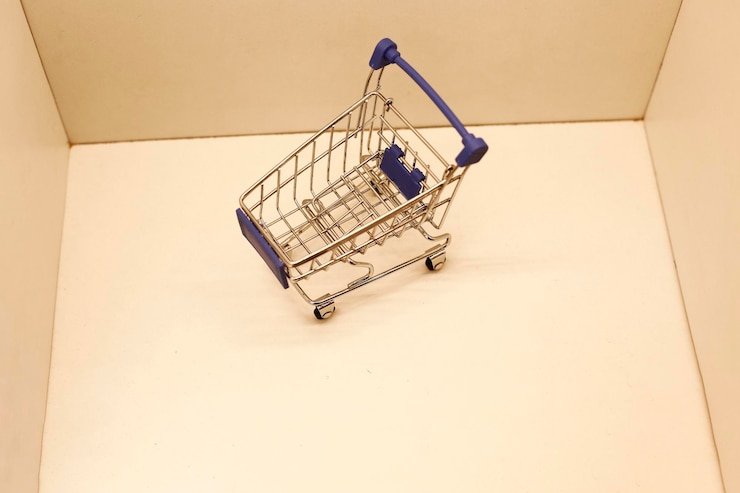If you’re running a Shopify store, cart abandonment is likely one of your biggest headaches. Shoppers fill their carts, head toward checkout, and then—poof—they’re gone. With industry averages showing abandonment rates around 70%, that’s a lot of lost revenue slipping through the cracks. But here’s the good news: you can win back many of those customers with the right strategies. In this blog, we’ll explore why carts get abandoned and share six proven tactics—exit-intent popups, automated recovery emails, strategic discounts, streamlined checkout, and more—to recover those sales and boost your bottom line.
The Problem: High Cart Abandonment Rates
Cart abandonment happens when a customer adds items to their cart but leaves your store without completing the purchase. According to Shopify and industry data, roughly 70% of carts are abandoned, costing eCommerce businesses billions annually. Why do customers bail? Common reasons include unexpected shipping costs (55% of abandonments), a complicated checkout process (17%), browsing without intent to buy (37%), or simply getting distracted. While you can’t control every factor, you can tackle the big ones and turn abandoned carts into completed sales.

The solution lies in proactive, user-focused strategies. Below, we’ll dive into six practical ways to recover lost revenue, including implementing exit-intent popups, sending automated recovery emails, offering targeted discounts, and simplifying your checkout process.
Strategy 1: Use Exit-Intent Popups to Catch Shoppers Before They Leave
Why It Works
Exit-intent popups detect when a visitor is about to leave your site (e.g., moving their cursor toward the browser’s close button) and display a last-second offer to keep them engaged. These popups can reduce abandonment by addressing hesitations like price concerns or indecision.
How to Implement
- Install a Popup App: Shopify apps like Privy, OptiMonk, or Justuno offer easy-to-set-up exit-intent features.
- Craft a Compelling Offer: Try a small discount (e.g., “Save 10% if you complete your order now!”), free shipping, or a bonus item.
- Keep It Non-Intrusive: Time the popup to avoid annoying users who are still browsing. Ensure it’s mobile-friendly.
- Add Urgency: Include a countdown timer (e.g., “Offer expires in 10 minutes”) to nudge action.
Pro Tip
Test different popup messages and offers. A/B testing with tools like Privy can show whether a 10% discount outperforms free shipping for your audience.
Strategy 2: Send Automated Cart Recovery Emails
Why It Works
Not every customer abandons their cart forever—many just need a gentle reminder. Automated recovery emails can recover 10–15% of abandoned carts by reconnecting with shoppers who were already interested. Timing and personalization are key.

How to Implement
- Enable Shopify’s Built-In Feature: Shopify’s abandoned cart email tool (available on all paid plans) lets you send automated reminders.
- Time Your Emails Strategically: Send the first email within 1–3 hours of abandonment, a second after 24 hours, and a third after 48 hours if needed.
- Personalize the Content: Include the customer’s name, the exact items in their cart, and high-quality product images.
- Add an Incentive: Offer a small discount or free shipping in the second or third email to sweeten the deal.
- Include a Clear CTA: Use buttons like “Complete Your Purchase” linking directly to their cart.
Pro Tip
Keep subject lines urgent but friendly, like “Forgot Something? Your Cart Is Waiting!” Avoid spamming—three emails max.
Strategy 3: Offer Targeted Discounts to Close the Deal
Why It Works
Price is a major reason for abandonment, with 50% of shoppers citing cost as their hurdle. A well-timed discount can tip hesitant buyers over the edge, especially if it feels exclusive or urgent.
How to Implement
- Use Dynamic Discounts: Shopify apps like Seguno or Smile.io let you create one-time-use codes for abandoned carts.
- Start Small: Offer 5–10% off to avoid training customers to always wait for deals. Reserve bigger discounts (15–20%) for high-value carts.
- Tie Discounts to Conditions: For example, “Get 10% off if you check out within 24 hours.”
- Test Free Shipping Instead: Free shipping often outperforms percentage discounts, especially if you set a minimum order threshold (e.g., “Free shipping on orders over $50”).
- Track Profitability: Use Shopify analytics to ensure discounts don’t eat too much into your margins.
Pro Tip
Avoid blanket discounts site-wide. Targeted offers for abandoned carts feel personal and preserve your brand’s value.
Strategy 4: Streamline Your Checkout Process
Why It Works
A clunky checkout is a conversion killer—17% of abandonments happen because the process is too long or confusing. Simplifying checkout reduces friction and makes buying feel effortless, encouraging customers to follow through.

How to Implement
- Enable Guest Checkout: Shopify supports guest checkout by default. Ensure it’s active so users don’t have to create accounts.
- Minimize Form Fields: Ask only for essentials—name, email, shipping, payment. Use autofill tools like Shop Pay to speed things up.
- Show a Progress Bar: Indicate “Step 1 of 3” so customers know what’s left.
- Be Upfront About Costs: Display shipping fees early (ideally on product pages) to avoid surprises.
- Offer Multiple Payment Options: Enable Shopify Payments for cards, PayPal, Apple Pay, and Google Pay to suit all preferences.
- Test the Flow: Use tools like FullStory to see where users drop off during checkout and fix those pain points.
Pro Tip
Try checking out on your store incognito. If it takes more than a minute or feels frustrating, simplify it.
Strategy 5: Build Trust to Ease Hesitations
Why It Works
Shoppers often abandon carts because they don’t trust the site or worry about hidden catches. Building trust—through reviews, secure badges, or clear policies—reassures customers and reduces abandonment.

How to Implement
- Showcase Reviews: Use apps like Loox or Yotpo to display product reviews on cart and checkout pages.
- Add Trust Badges: Include icons for secure payments (e.g., “Shopify Secure” or “PayPal Verified”) near the checkout button.
- Highlight Policies: Clearly state your return, refund, and shipping policies in the footer or checkout. Link to a detailed FAQ.
- Use Social Proof: Show real-time notifications (e.g., “Sarah from Chicago just bought this!”) with apps like Proof Factor.
- Secure Your Site: Ensure your Shopify store has an SSL certificate (included by default) and displays “https” to signal safety.
Pro Tip
Place trust signals where doubt is highest—near payment fields or CTAs—to address concerns at the critical moment.
Strategy 6: Retarget Abandoned Carts with Ads
Why It Works
Not all customers respond to emails or popups. Retargeting ads on platforms like Meta, Google, or TikTok remind shoppers about their carts when they’re browsing elsewhere online, bringing them back to your store. These ads can recover 5–10% of abandoned carts when done right.
How to Implement
- Set Up Dynamic Ads: Use Shopify’s integration with Meta Ads or Google Ads to show users the exact products they left behind.
- Target Warm Audiences: Focus on cart abandoners rather than all site visitors to maximize ROI.
- Craft Engaging Creatives: Use high-quality product images, clear text (e.g., “Your cart misses you!”), and a discount if needed.
- Set a Budget: Start small ($5–10/day) and scale based on results. Shopify’s analytics can track ad-driven conversions.
- Cap Ad Frequency: Limit how often ads appear (e.g., 3–5 times) to avoid annoying potential customers.
Pro Tip
Combine retargeting with email campaigns for a one-two punch. A customer who sees both is more likely to return.
Measuring Success and Optimizing
Recovering abandoned carts is an ongoing process. Use Shopify’s abandoned checkout report to track your abandonment rate and recovered sales. Monitor metrics like email open rates (aim for 20%+), popup conversion rates (5–10% is solid), and ad click-through rates (1–2% is average). Test one strategy at a time—say, tweaking your email timing or discount size—to see what moves the needle. Over time, these tweaks can recover thousands in lost revenue.

Why This Matters for Your Shopify Store
Reducing cart abandonment isn’t just about immediate sales—it’s about maximizing every visitor’s value. Recovering even 10% of abandoned carts can significantly boost your revenue, especially during peak seasons. Plus, a smoother shopping experience builds trust, turning one-time browsers into loyal customers.
Ready to Reclaim Your Lost Sales?
At Digital Pro, we’re experts in Shopify development and marketing, with a knack for turning abandoned carts into completed orders. From setting up recovery emails to optimizing your checkout, we’ve got you covered. Want a free audit to see where your store’s leaking revenue? Contact us today and let’s start recovering those sales.
Read More :-
Why Your Shopify Store Isn’t Converting: 5 Common UX Mistakes and How to Fix Them
SEO for Shopify: How to Rank Higher Without Breaking the Bank
Struggling to Stand Out? How to Build a Unique Shopify Brand on a Budget
